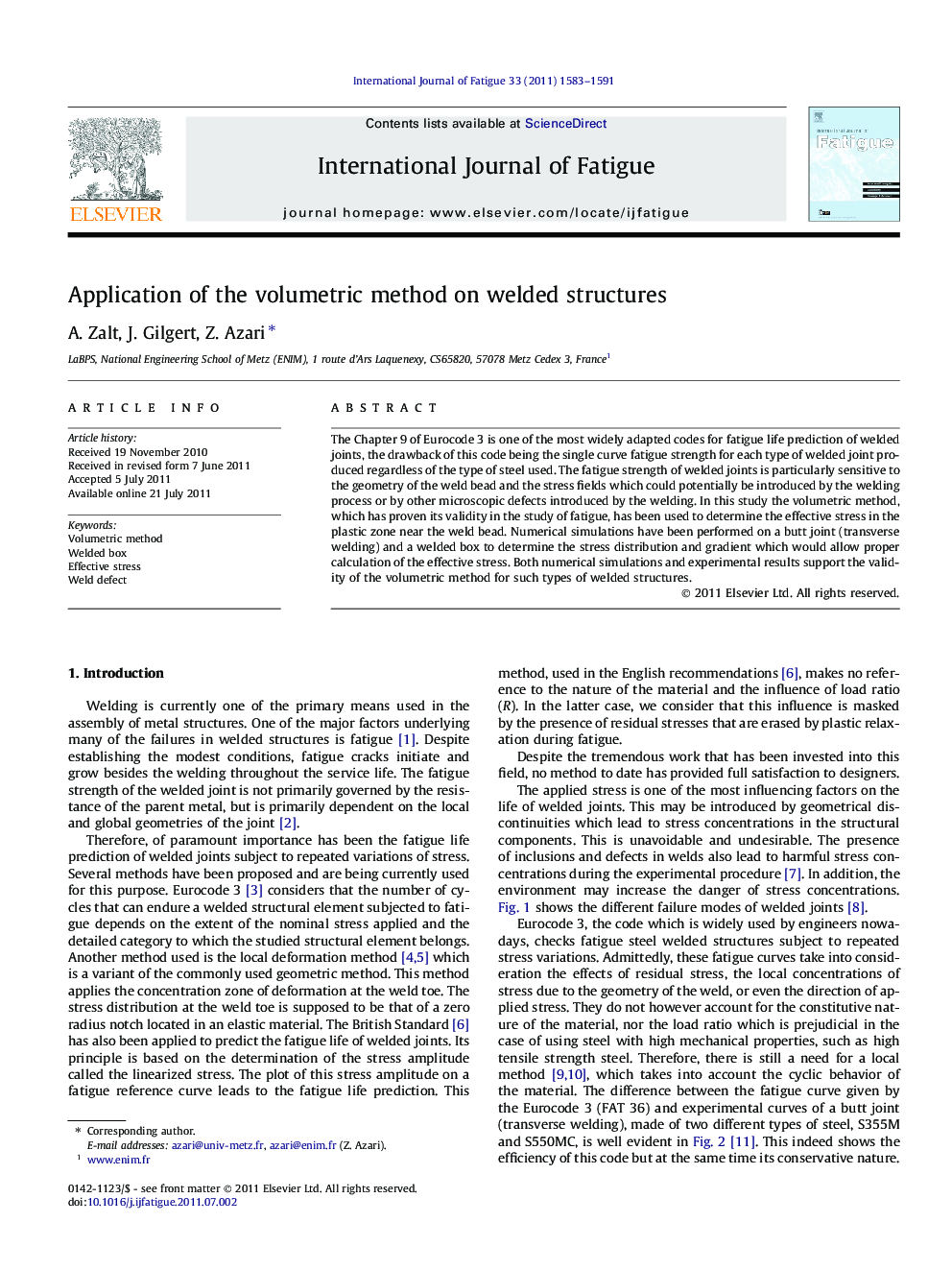| Article ID | Journal | Published Year | Pages | File Type |
|---|---|---|---|---|
| 777796 | International Journal of Fatigue | 2011 | 9 Pages |
The Chapter 9 of Eurocode 3 is one of the most widely adapted codes for fatigue life prediction of welded joints, the drawback of this code being the single curve fatigue strength for each type of welded joint produced regardless of the type of steel used. The fatigue strength of welded joints is particularly sensitive to the geometry of the weld bead and the stress fields which could potentially be introduced by the welding process or by other microscopic defects introduced by the welding. In this study the volumetric method, which has proven its validity in the study of fatigue, has been used to determine the effective stress in the plastic zone near the weld bead. Numerical simulations have been performed on a butt joint (transverse welding) and a welded box to determine the stress distribution and gradient which would allow proper calculation of the effective stress. Both numerical simulations and experimental results support the validity of the volumetric method for such types of welded structures.
► Fatigue life of tow welded structure has been determined by the volumetric method. ► The volumetric approach is applicable for butt joint, to predict its fatigue life. ► The volumetric method is a valid approach for fatigue life prediction of welded boxes. ► The volumetric approach prevents fatigue tests which are burdensome and costly. ► The volumetric method takes into account the elastic–plastic behavior of the material.
